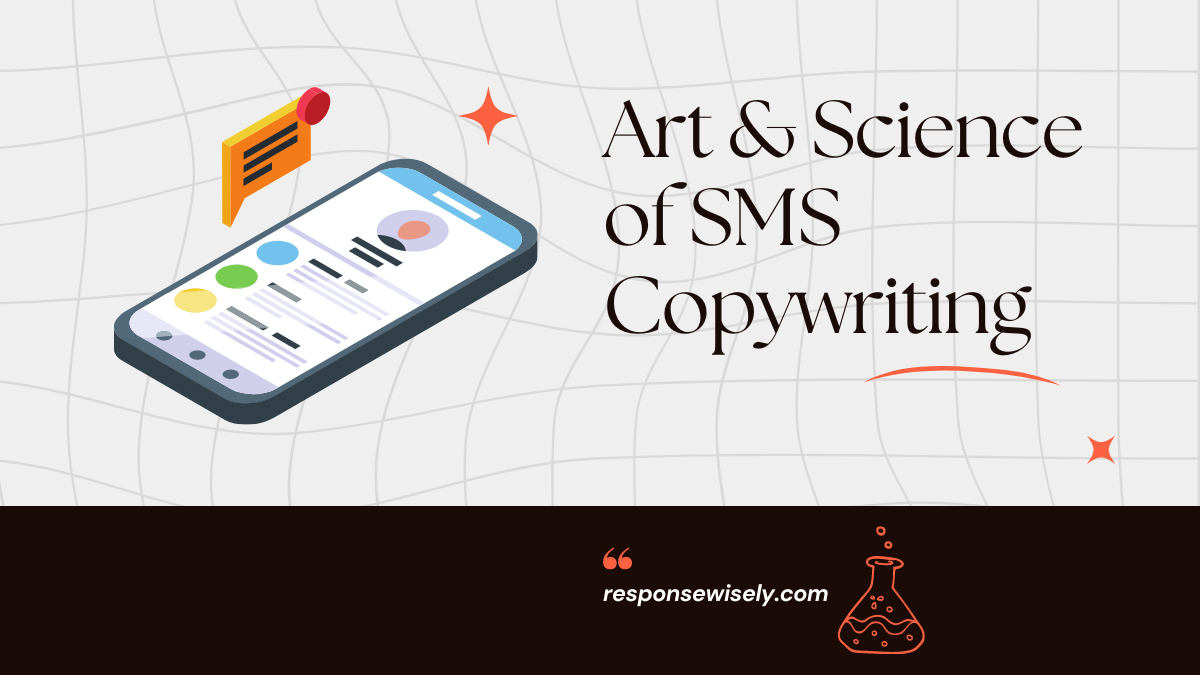When it comes to SMS copywriting, it’s not just about crafting words that fit into 160 characters. It’s about understanding the art and science behind creating impactful messages that drive action. In this text, I’ll investigate into the strategies and techniques that can help you master the art of crafting compelling SMS copy that resonates with your audience.
From crafting attention-grabbing subject lines to optimizing the call-to-action, SMS copywriting requires a unique set of skills to make every character count. Join me as I uncover the secrets behind creating SMS messages that not only capture attention but also inspire engagement and conversions. Let’s unlock the power of concise and persuasive messaging in the world of SMS marketing.
Importance of Effective SMS Copywriting
Capturing Attention with Limited Characters
Crafting compelling SMS copy is vital as it’s the first impression your audience will get. With limited characters, every word must count. Use powerful words to grab attention quickly.
Generating Clicks and Conversions
An effective call-to-action is the heart of SMS copy. Direct your audience with clear instructions. Optimize for conversions by making it easy for recipients to act.
| Data | Statistics |
|---|---|
| SMS open rate | 98% |
| Conversion rate | 45% |
Key Principles of SMS Copywriting
Keeping it Concise
When it comes to SMS copywriting, brevity is key. SMS messages have a 160-character limit, so every word counts. I focus on delivering the message succinctly, ensuring that each word contributes to the overall impact. By keeping it concise, I grab the recipient’s attention quickly and effectively.
Crafting Compelling Calls to Action
A strong call to action (CTA) is essential in SMS copywriting. It should be clear, actionable, and incentivizing. I make sure to include actionable verbs and create a sense of urgency to prompt immediate action. CTAs like “Shop now” or “Limited time offer” drive engagement and conversions.
Personalizing the Message
Personalization is a powerful tool in SMS marketing. By using the recipient’s name or past purchase history, I tailor the message to resonate with the individual. Personalized SMS messages have a 6-8 times higher engagement rate compared to generic ones. I leverage personalization to strengthen the connection with the audience and drive better results.
Strategies for Success in SMS Copywriting
A/B Testing for Optimization
When it comes to A/B testing in SMS copywriting, I always make sure to test different variables such as the message content, call to action, timing, and sender name to optimize performance. It’s essential to analyze the results and iterate based on what resonates best with the audience.
Leveraging Emojis and Visuals
Incorporating emojis and visuals in SMS messages can enhance engagement and reinforce the message. I find that using emojis strategically, and ensuring they are relevant to the content, can capture attention and convey emotions effectively in a limited space.
Timing and Frequency Considerations
Timing plays a crucial role in SMS marketing. I prioritize sending messages at optimal times based on my target audience’s behavior and preferences. Also, striking a balance with the frequency of messages is key to maintaining engagement without overwhelming recipients.
| Data | Values |
|---|---|
| Optimal Timing | Weekdays during lunch hours and early evenings |
| Frequency | 2-4 messages per month for better engagement |
Key Takeaways
- Effective SMS copywriting relies on capturing attention with limited characters and crafting compelling calls to action.
- Keep messages concise to grab recipients’ attention quickly and use actionable CTAs like “Shop now” to prompt immediate action.
- Personalizing SMS messages boosts engagement, with personalized messages showing a higher interaction rate than generic ones.
- A/B testing is essential for optimizing SMS performance by testing variables like message content, CTAs, timing, and sender name.
- Incorporating emojis and visuals can enhance engagement in SMS messages, while sending messages at optimal times and balancing frequency are crucial for success in SMS marketing.
Conclusion
Implementing the art and science of SMS copywriting can significantly impact the success of your marketing campaigns. By utilizing A/B testing techniques to refine message content, call to action, timing, and sender details, you can optimize performance and drive better results. Embracing emojis and visuals strategically adds a layer of engagement and emotion to your messages, enhancing their effectiveness. Tailoring message timing to align with your audience’s behavior and preferences is crucial, as is maintaining a balance in message frequency to sustain engagement. Armed with key insights on optimal timing and message frequency, you are now equipped to craft compelling SMS campaigns that resonate with your target audience and yield impressive outcomes.
Frequently Asked Questions
What is A/B testing in SMS copywriting?
A/B testing involves creating two versions of a text message with slight variations to determine which performs better in terms of engagement and conversions. This helps marketers identify the most effective message content, call to action, timing, and sender name.
How can emojis and visuals enhance SMS engagement?
Emojis and visuals can add personality to text messages, capture attention, and evoke emotional responses from recipients. Using them strategically can help convey messages more effectively, increase engagement, and make the content more visually appealing and memorable.
Why is timing important in SMS marketing?
Timing plays a crucial role in the success of SMS marketing campaigns as sending messages when recipients are most likely to be engaged increases the chances of conversion. Understanding the target audience’s behavior and preferences enables marketers to schedule messages effectively for optimal impact.
How can marketers maintain engagement through message frequency?
Balancing the frequency of messages is essential to prevent overwhelming recipients and ensure sustained engagement. By monitoring response rates and adjusting the frequency based on audience feedback, marketers can maintain interest and avoid unsubscribes while effectively communicating their message.

